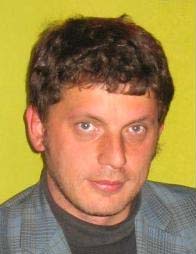Dr. Florin Popescu
The PhysOrg article Brain2Robot: People who suffer from paralysis are confronted with many situations in which they need a helping hand said
“In the Brain2Robot project, an international team of researchers has developed a robot control system that works on the basis of electroencephalograph (EEG) signals. This new idea could enable patients with severe motor disabilities to regain some of their lost autonomy.The patient controls the robot arm with their thoughts: If they think about wanting to move their right hand, the robot arm is activated. If they imagine themselves moving their left hand, the robot arm will, for instance, lift up a cup of coffee.
But how can thoughts be translated into instructions for the robot? The solution is based on a concept known as a brain-computer interface (BCI). Researchers at the Fraunhofer Institute for Computer Architecture and Software Technology FIRST and the Charité hospital in Berlin have been working on this type of interface for almost seven years. For the input, they use a perfectly normal electroencephalogram (EEG), just like the ones used in everyday clinical practice.
‘The aim of the project is to help people with severe motor disabilities to carry out everyday tasks. The advantage of our technology is that it is capable of translating an intended action directly into instructions for the computer,’ says team leader Florin Popescu.”
Florin Popescu, Ph.D. is a researcher whose work straddles engineering, applied mathematics and neuroscience. He is currently the leader of the Brain2Robot project at Fraunhofer Institute FIRST in Berlin, whose goal is to partially restore arm function in severely paralyzed people by detecting thought commands via EEG (electrodes which touch the scalp), and along with direction of gaze, control a robotic arm. He is interested in interfacing the brain to computers, robots, and the body itself.
Florin began his scientific research in neurophysiology at the Rehabilitation Institute of Chicago. Specifically, he studied motor control, i.e. the science of how the mind controls the body’s movements, arguing — from experiments in which humans manipulated specially programmed robots — that most of the control loops necessary to control the arm in humans are in the brain and not in the spinal cord, as some believed. One of the tangible things that distinguishes humans from other species is the amount of direct cortical control over muscles. Humans’ unique manual and facial dexterity that results from this broad bandwidth link may have been key to the evolution of language itself as gestures, facial expressions and signs.
He also designs robots and other gadgets, such as surgical guidance robot he worked on in Bologna, Italy. Combining neuroscience, motor physiology and engineering, he decided to use EEG to prosthetic robot control for rehabilitation use in tetraplegia. The basic question he’d like to answer is: how broad of a link between the brain and the (extended) body is it necessary to have before patients would feel control of their own body? Does it require surgically implanted devices and if so which kind?
